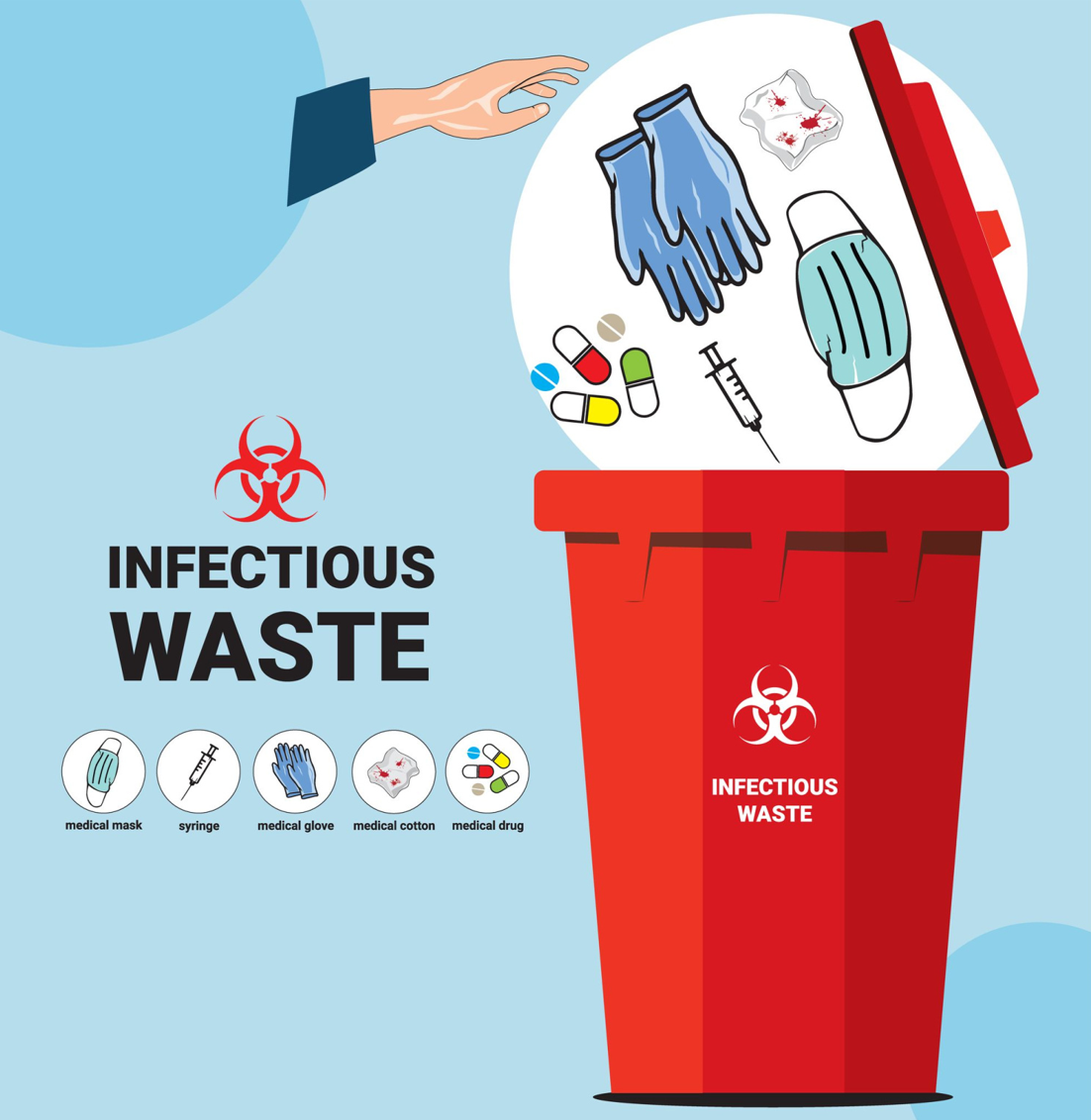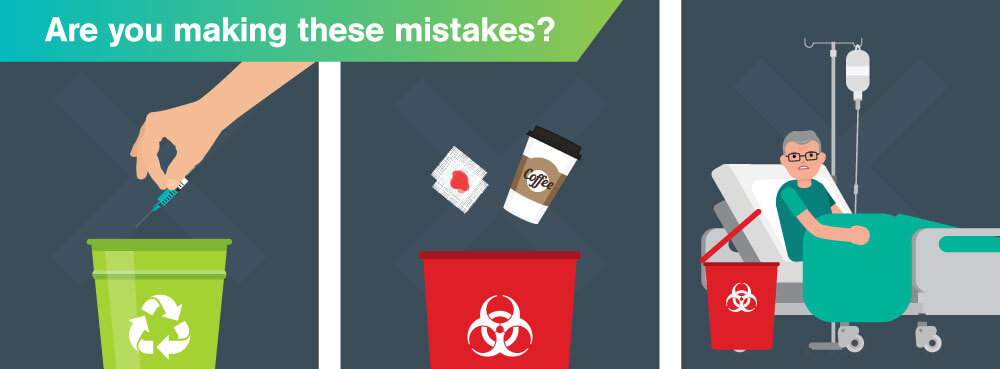Efficient Techniques of Medical Waste Disposal
Reliable approaches of medical garbage disposal are essential in keeping public health and wellness and environmental security. Medical waste, including sharps, pathological waste, and pharmaceutical waste, should be managed and disposed of correctly to stop the spread of infections and shield the atmosphere. This needs adherence to rigorous regulations and the implementation of expert waste monitoring practices.
Appropriate segregation of clinical waste, secure and risk-free storage space, effective treatment and sanitation methods, and environmentally-friendly disposal choices are crucial parts of a reliable clinical waste disposal system. Specialist waste management services play an important function in guaranteeing conformity with laws and reducing the dangers related to inappropriate disposal. By utilizing these methods, healthcare facilities can add to a much safer and cleaner environment while safeguarding the wellness of the area.
Correct Partition of Medical Waste
Proper partition of clinical waste is vital for making certain the reliable and safe disposal of these possibly unsafe materials. Clinical waste describes any waste created throughout health care activities, such as medical facilities, facilities, labs, and research study centers. It consists of a large range of products, such as utilized needles, syringes, polluted dressings, ran out or unused medicines, and biological products.
By setting apart medical waste, healthcare centers can decrease the risk of infections, injuries, and ecological contamination. The process involves classifying waste into various types, such as sharps, contagious waste, pharmaceutical waste, and non-hazardous waste. Each kind calls for certain handling, product packaging, and disposal techniques to avoid direct exposure to health care employees, waste administration personnel, and the basic public.
To make certain correct partition, medical care centers need to develop clear guidelines and give adequate training to employee. This includes informing employees on the various waste classifications, proper product packaging strategies, and the usage of ideal containers - WasteX Medical Waste Disposal. Furthermore, clear signs and color-coding systems can be carried out to assist in the recognition and segregation of different waste kinds
Safe and Secure Storage of Medical Waste
Safe and safe storage space of clinical waste is important for preserving the honesty and containment of potentially hazardous materials. Appropriate storage not only shields health care employees and the public from direct exposure to harmful materials however additionally stops ecological contamination.
To make certain secure storage, medical facilities ought to stick to certain standards. To start with, waste needs to be saved in puncture-resistant and watertight containers that are identified appropriately. These containers should be firmly sealed to protect against any kind of leak or spills. In addition, the storage space location need to be unattainable and secure to unauthorized employees, minimizing the danger of unintended direct exposure.
Proper segregation of medical waste is likewise important for secure storage space. Various sorts of waste, such as sharps, transmittable materials, and pharmaceutical waste, should be divided to stop cross-contamination. This segregation can be accomplished via using color-coded containers or bins.
Routine monitoring and evaluation of the storage space location are crucial to recognize any potential threats or breaches. This includes monitoring for indications of damages or degeneration in the containers, ensuring proper ventilation, and keeping track of temperature and humidity click site levels.
Effective Treatment and Sanitation Techniques

One typically made use of treatment technique is autoclaving, which involves subjecting the waste to high-pressure vapor at temperature levels above 121 levels Celsius. One more approach is incineration, which involves shedding the waste at high temperature levels.
Chemical sanitation is another effective method for dealing with medical waste. This method includes utilizing disinfectants such as chlorine substances, phenolic substances, or hydrogen peroxide to kill or inactivate virus (WasteX Medical Waste Disposal). Chemical sanitation is typically utilized for liquid waste, such as research laboratory examples or physical liquids
In recent times, different therapy techniques such as microwave sanitation, irradiation, and biological therapy have also acquired interest. These techniques supply benefits such as decreased environmental impact and power consumption contrasted to standard techniques.
Environmentally-friendly Disposal Options
In the world of clinical waste disposal, taking into consideration environmentally-friendly alternatives is essential. Health care facilities produce a considerable quantity of waste, including transmittable materials, drugs, and chemicals, which can present significant risks to human health and the environment otherwise managed properly. Fortunately, there are several environmentally-friendly disposal options readily available that can help reduce these threats.
Reusing clinical waste includes setting apart and refining certain products for reuse or repurposing. Additionally, some health care facilities have carried out recycling programs for particular medical devices or devices, further lowering waste generation.
One more environmentally-friendly disposal alternative is waste-to-energy conversion. This method includes transforming medical waste right into energy via processes like incineration or anaerobic food digestion. medical waste disposal service. Incineration, when done effectively with innovative technologies, can produce energy while reducing harmful exhausts. Anaerobic food digestion, on the various other hand, breaks down natural waste in the lack of oxygen, generating biogas that can be utilized for power or heat generation.

Benefits of Specialist Waste Administration Services
One substantial advantage of specialist waste administration services is the improved efficiency in handling and getting rid of of clinical waste. By utilizing professional waste administration solutions, health care centers can make certain that all medical waste is handled and disposed of effectively, reducing the threat of contamination and the spread of conditions.
Specialist waste management solutions employ skilled and skilled employees who are knowledgeable concerning the guidelines and guidelines for medical garbage disposal. They have accessibility to customized tools and tools that enable them to handle different kinds of clinical waste securely and effectively. These solutions additionally have well-established treatments and protocols in location to ensure that waste is segregated, packaged, moved, and disposed of in conformity with regional, state, and government laws.
Additionally, specialist waste administration solutions can supply health care facilities with extensive waste administration options. They can provide services such as waste collection, transportation, treatment, and disposal, tailored to the certain demands and needs of the center. This removes the burden of managing waste internally, allowing health care personnel to concentrate on providing quality client treatment.
Conclusion
In conclusion, effective techniques of medical waste disposal involve appropriate segregation, safe storage, treatment and disinfection, and environmentally-friendly disposal alternatives. These techniques ensure the safe handling and monitoring of medical waste, preventing the spread of infections and shielding the atmosphere.
Clinical waste, including sharps, pathological waste, and pharmaceutical waste, have to be taken care of and disposed of properly to prevent the spread of infections and secure the setting.Proper segregation of medical waste, secure and protected storage, effective therapy and disinfection techniques, and environmentally-friendly disposal options are essential parts of a reliable medical waste disposal system. The procedure involves categorizing waste right into different kinds, such as sharps, contagious waste, pharmaceutical waste, and non-hazardous waste. By utilizing expert waste administration services, healthcare centers can guarantee that all medical waste is taken care of and disposed of properly, reducing the risk of contamination and the spread of conditions.
Professional waste management services employ skilled and skilled workers who are knowledgeable about the policies and standards for medical waste disposal.